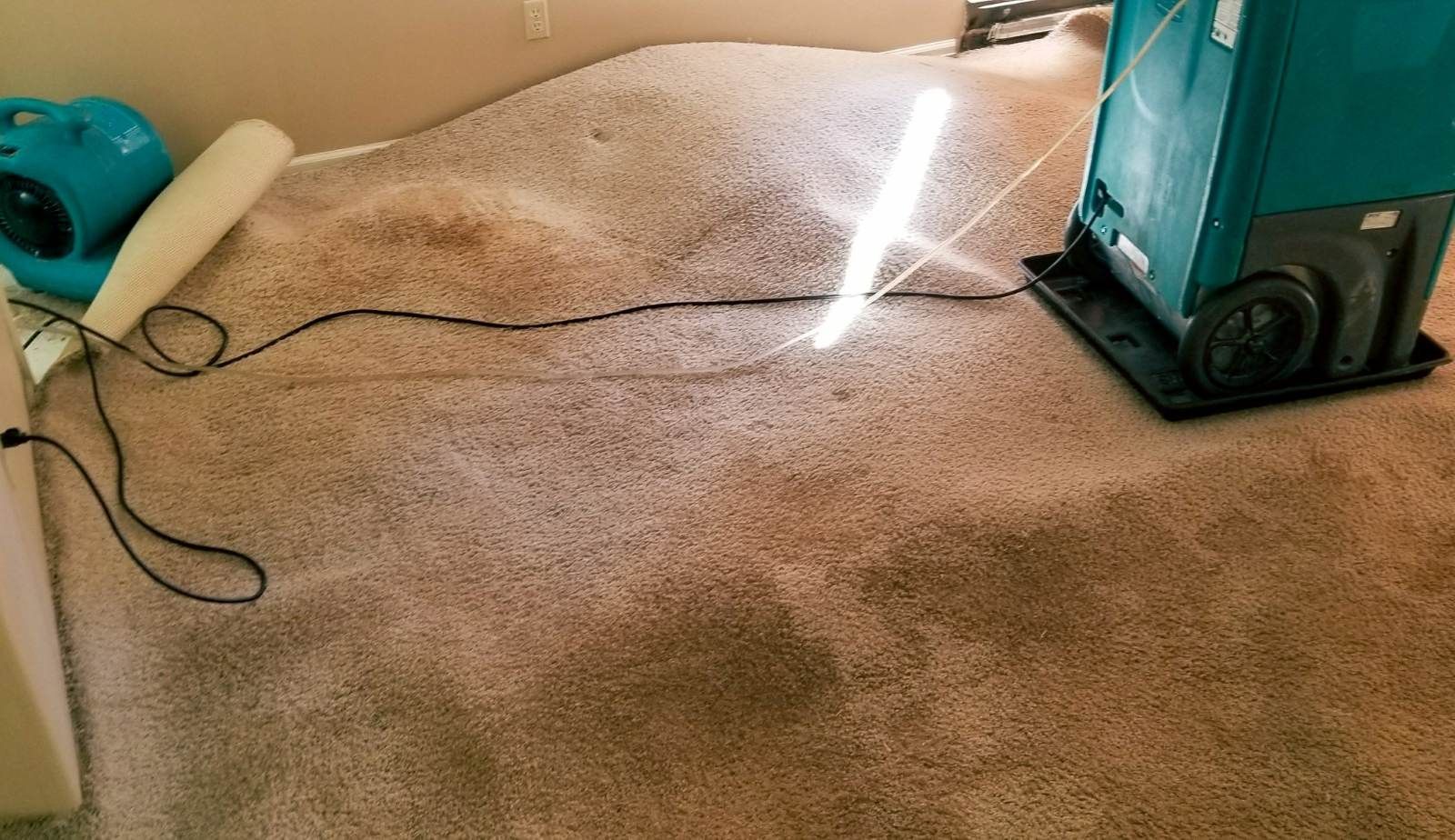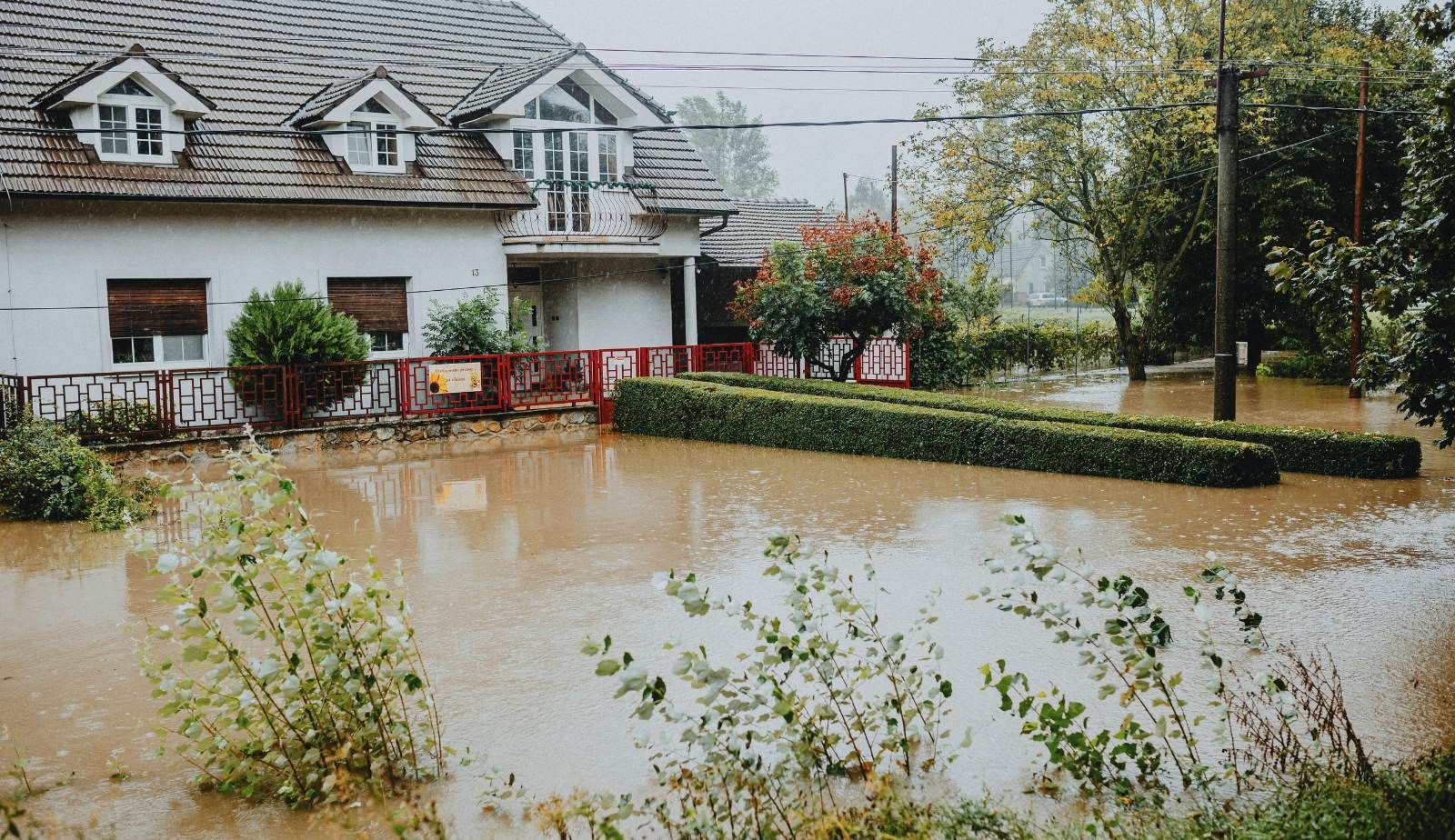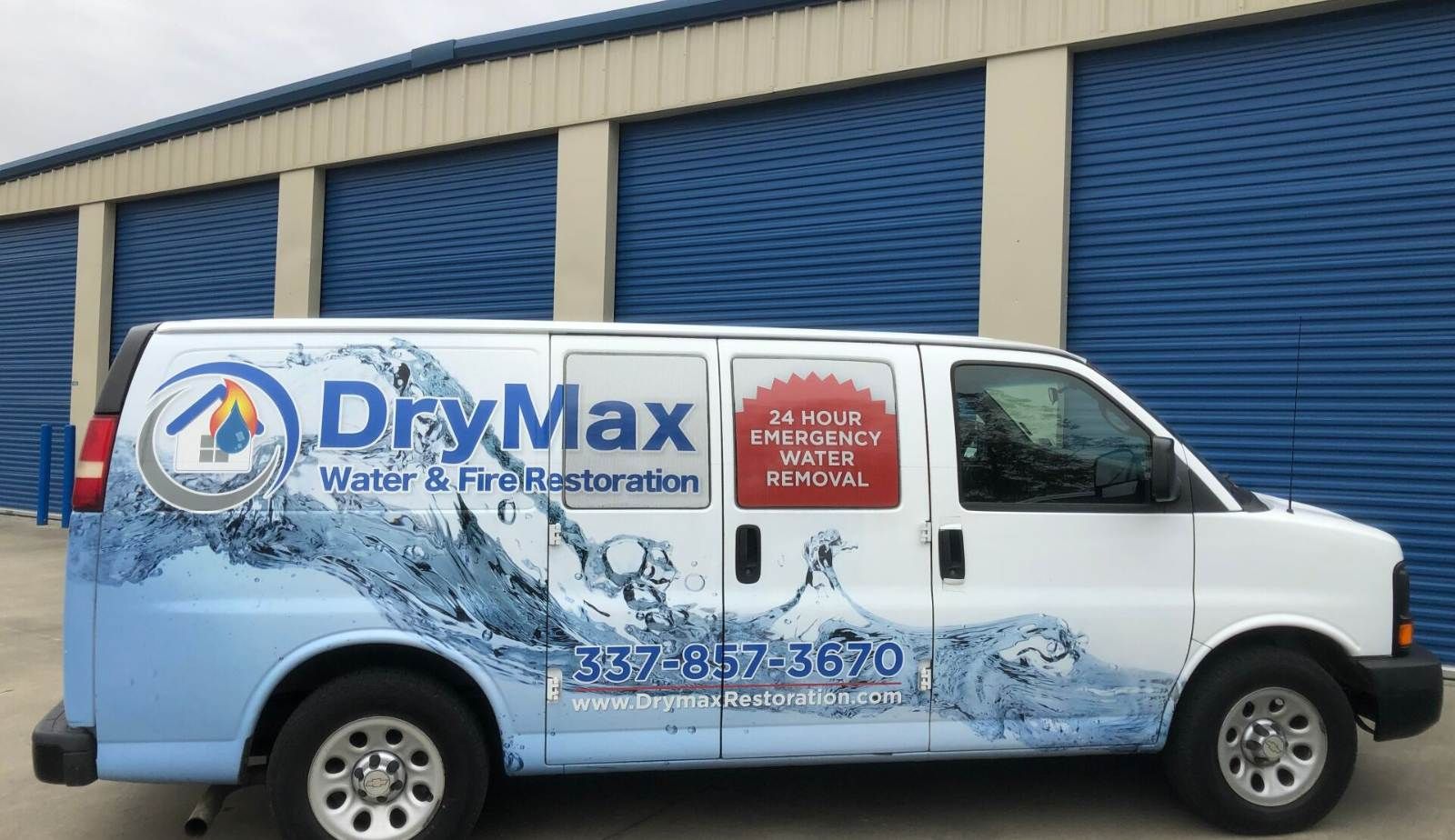Top Signs of Hidden Water Damage in Louisiana Homes: Essential Tips from DryMax
Hidden water damage is a significant concern for homeowners in Louisiana, particularly given the state’s humid climate and frequent storms. Many property owners may not realize the extent of potential damage until it is too late, leading to costly repairs and health risks associated with mold growth. Identifying the top signs of hidden water damage can help homeowners take proactive steps to protect their properties.
Common indicators include musty odors, water stains, and structural issues like sagging floors or peeling paint. These subtle signs can often be overlooked, yet they reveal critical information about underlying water problems. Residents can benefit from expert tips to recognize these warning signs early and prevent further deterioration.
By staying vigilant and informed, homeowners can safeguard their investments against the pervasive effects of water damage. Recognizing the top signs is the first step toward ensuring a safe and healthy living environment.
Why Hidden Water Damage Is a Major Risk in Louisiana Homes
The combination of Louisiana’s unique climate and the construction styles of many homes creates an environment where hidden water damage can thrive. Understanding these aspects is crucial for homeowners to protect their properties.
Impact of Louisiana’s Climate on Water Intrusion
Louisiana experiences high humidity and heavy rainfall, creating optimal conditions for water intrusion. These factors lead to moisture accumulation around and beneath homes. Such environments encourage mold growth and can compromise structural integrity over time.
Homeowners often overlook moisture levels, as the damage can evolve without visible signs. When heavy rains saturate the ground, the water can seep into foundations, leading to serious issues such as weakening structural support.
Additionally, high humidity levels can worsen the situation by making it difficult for homes to dry out thoroughly, thereby exacerbating the problem.
Unique Vulnerabilities of Slab and Pier Foundations
Many Louisiana homes are built on slab or pier foundations, making them particularly vulnerable to hidden water damage. Slab foundations, while often considered stable, can allow water to pool beneath without proper drainage. This results in foundation damage that may go unnoticed until significant issues arise.
Pier foundations also present risks. Water can accumulate around piers, compromising their integrity and leading to shifting or settling. The damage may remain concealed, making early detection challenging for homeowners.
Regular inspections are vital to identify potential issues before they escalate. Homeowners should be especially vigilant about signs like cracks in walls or uneven floors.
Common Areas Where Water Damage Remains Undetected
Certain areas in homes are more prone to hidden water damage. Bathrooms are frequent culprits due to high moisture levels from showers and sinks. Homeowners should inspect for leaky faucets, dampness behind tiles, and water stains on ceilings.
Basements and crawl spaces also face risks, as these areas often experience poor ventilation. Moisture can build up in these spaces, leading to mold growth and unseen deterioration.
Kitchens, particularly around appliances like dishwashers and refrigerators, are also at risk. Regular checks in these areas can help homeowners catch early warning signs, preventing significant and costly repairs.
Visible and Subtle Signs of Hidden Water Damage
Recognizing both visible and subtle signs of hidden water damage is essential for homeowners in Louisiana. Early detection can help prevent significant structural issues and costly repairs. The following indicators are crucial to watch for when assessing potential water damage.
Musty Odors and Mildew Smells
A musty odor is often one of the earliest signs of hidden water damage. It typically indicates the presence of mildew or mold, which thrives in damp environments. Homeowners should pay attention to persistent earthy smells, especially in areas that are usually dry.
These odors can emerge from behind walls, under floors, or in ceilings where moisture buildup has occurred. When treating this issue, it's vital to determine the source of the moisture to effectively eliminate the odor and prevent future mold growth. Keeping indoor humidity levels below 60% can help minimize these smells.
Unexplained Water Stains and Discoloration
Water stains can appear as yellowish-brown spots on ceilings or walls and are a clear indication of potential leaks. Homeowners should be vigilant about monitoring these stains, as they often indicate ongoing moisture issues.
In some cases, discoloration can spread, revealing the extent of water damage. Stains may also appear darker when wet and lighten when dry. It is crucial for residents to investigate any unexplained stains promptly. Identifying the source of the leak can prevent further damage and mold growth.
Bubbling or Peeling Paint and Wallpaper
Bubbling or peeling paint and wallpaper often signals underlying moisture problems. When water seeps into walls, it can cause the paint or wallpaper to lose adhesion, resulting in visible blisters and peeling.
Homeowners should examine areas around windows, doors, and plumbing fixtures where water exposure is more likely. In addition, paint may look discolored or warped due to moisture ingress. Timely repair can reduce the risk of mold development and structural damage, so it is advisable to address this issue as soon as it becomes apparent.

Structural Warning Signs to Watch For
Homeowners in Louisiana should be vigilant for structural warning signs that indicate hidden water damage. Recognizing these signs early can prevent costly repairs and maintain the safety of a home. Here are key indicators to observe.
Warped or Buckled Floors
Warped or buckled floors are often among the first visible signs of moisture intrusion. This issue can stem from water seeping beneath floorboards, causing materials to expand.
- Signs to look for:
- Raised floor sections
- Gaps between floorboards
- Uneven surfaces
These signs indicate increased moisture levels, which can lead to severe structural damage if left untreated. Homeowners should take immediate action upon noticing warped floors by investigating the underlying cause.
Sagging or Soft Ceilings
Sagging or soft ceilings can signal significant moisture accumulation within a home. Water leaks from above may cause the ceiling material to weaken.
- Key indicators include:
- Bubbles or bulges in the ceiling
- Soft spots that yield to gentle pressure
- Discoloration or stains
These conditions suggest that structural integrity is compromised. Ignoring these signs can allow for further damage and mold growth, which poses health risks.
Crumbling or Stained Walls
Crumbling or stained walls are often a clear indication of long-term water exposure. This damage may also result from leaks in plumbing or roof issues.
- Important signs consist of:
- Peeling paint or wallpaper
- Cracks along wall seams
- Stains that spread, indicating ongoing leaks
Addressing the moisture source promptly is crucial. Failure to do so can escalate into more extensive repairs related to compromised structural integrity and increased risk of mold development.
Plumbing Leaks and Hidden Water Sources
Addressing plumbing leaks and hidden water sources is crucial for homeowners in Louisiana. These leaks can lead to significant damage if not detected early. Understanding specific signs and surveillance methods will help prevent costly repairs and maintain the integrity of the home.
Detecting Plumbing Leaks Behind Walls
Hidden plumbing leaks often occur behind walls, making them challenging to detect. Homeowners should watch for signs like:
- Moisture or Discoloration: Check walls for dark spots or water stains.
- Peeling Paint or Wallpaper: A sign of trapped moisture behind surfaces.
- Unexplained Increases in Water Bills: A sudden spike can indicate a leak.
Using tools such as moisture meters can provide more accurate readings of hidden moisture levels. Additionally, homeowners should look for a musty smell, which can indicate mold growth tied to water leaks. Timely detection is key to preventing structural damage and expensive repairs.
Monitoring Plumbing Fixtures and Appliances
Regular checks of plumbing fixtures and appliances can prevent hidden water leaks. Homeowners should inspect:
- Sinks & Faucets: Look for dripping or pooling water.
- Toilets: Check for running water or gaps at the base.
- Washing Machines: Inspect hoses for cracks or leaks.
Setting up a routine inspection schedule is beneficial. Homeowners should monitor their water usage and pay attention to hydraulic sounds from plumbing fixtures. Catching leaks early reduces the risk of significant damage and enhances water management.

Health Hazards Linked to Hidden Water Damage
Hidden water damage can lead to several health hazards that affect the well-being of individuals living in affected homes. Understanding these risks is crucial for maintaining a safe environment and protecting physical health.
Mold Growth in Unseen Areas
Mold thrives in damp conditions, making hidden water damage a prime contributor to its growth. Areas like behind walls, under floors, or within ceilings can harbor mold without visible signs.
Common types of mold include:
- Aspergillus
- Cladosporium
- Stachybotrys (black mold)
These molds can release spores into the air, potentially leading to allergic reactions and respiratory issues. Homeowners should regularly inspect these less visible areas for moisture, as early detection can prevent extensive mold issues.
Health Risks from Prolonged Exposure
Prolonged exposure to mold and mildew can pose serious health risks. Individuals may experience symptoms ranging from mild respiratory irritation to severe allergies.
Symptoms may include:
- Chronic cough
- Sneezing
- Skin irritation
In more severe cases, mold exposure can lead to respiratory infections or exacerbate existing conditions such as asthma. Vulnerable populations, including the elderly and individuals with compromised immune systems, are at a higher risk.
Mitigating hidden water damage is essential not only for preserving property but also for safeguarding health. Regular inspections and prompt remediation can significantly reduce exposure to harmful mold.
Consequences of Ignoring the Early Signs
Ignoring early signs of water damage can lead to severe consequences for homeowners. Delayed action can escalate minor issues into major problems, affecting finances and the safety of the home. Understanding these consequences is crucial for effective management of home maintenance.
Costly Repairs from Delayed Detection
When water damage goes unnoticed, the repair costs can soar. Initial signs like peeling paint or water stains may seem trivial. However, if not addressed, they can evolve into significant issues requiring extensive repairs.
- Repair Estimates:
- Minor fixes: $100 - $500
- Major repairs: $2,000 - $10,000+
Mold remediation can also add to expenses, often ranging from $500 to $6,000, depending on severity. By addressing water damage early, homeowners can significantly reduce the financial burden.
Foundation and Structural Integrity Threats
Water infiltration poses a substantial risk to a home's structural integrity. Prolonged exposure can weaken the foundation. This can lead to serious problems such as:
- Cracks in Walls: Visible signs of shifting due to water saturation.
- Sagging Floors: Indicates potential damage to beams and supports.
- Roof Damage: Increased moisture can compromise roofing materials.
Neglecting these early signs can result in possible structural collapse in extreme cases, requiring complete rebuilding. Ensuring timely inspections and repairs can safeguard both the home and the investment.
Drymax Pro Tips for Prevention and Early Detection
Preventing water damage requires vigilance and proactive measures. Homeowners in Louisiana can take specific steps to identify and mitigate risks effectively. The following strategies focus on routine checks, moisture control, and when to seek professional help.
Routine Inspections and Maintenance Strategies
Regular inspections are essential in detecting hidden water damage early. Homeowners should conduct checks at least twice a year, focusing on potential problem areas.
- Check for leaks: Inspect plumbing fixtures, appliances, and pipes for any signs of leakage.
- Inspect the roof: Look for damaged shingles or debris that could trap moisture.
- Review gutters and downspouts: Ensure they are clean and direct water away from the foundation.
During these inspections, any signs of discoloration, dampness, or musty odors should be noted. These can indicate the presence of lingering moisture. Using a moisture meter can help assess moisture levels in walls and ceilings accurately.
Moisture and Humidity Control Methods
Maintaining appropriate indoor humidity levels is crucial for preventing water damage. High humidity can promote mold growth and structural deterioration.
- Use dehumidifiers: Invest in dehumidifiers to help maintain humidity levels between 30-50%.
- Ventilate areas prone to moisture: Ensure that bathrooms and kitchens are well-ventilated to allow moisture to escape.
- Seal gaps and cracks: Use caulk and weatherstripping to prevent outdoor moisture from entering the home.
Regularly checking humidity levels can help homeowners stay ahead of potential issues. Installing a hygrometer can provide real-time data on indoor moisture conditions.
When to Call a Professional for Assessment
Some situations necessitate expert assistance. Homeowners should consider contacting professionals when:
- Signs of extensive damage appear: This includes large water stains, persistent mold growth, or walls that feel spongy.
- Unidentified leaks: If the source of moisture is unknown, professionals can utilize specialized equipment to locate hidden water intrusion.
- After major weather events: Following heavy rain or storms, an inspection can identify damage that may not be immediately visible.
Drymax offers certified expertise in water damage restoration. Their team can evaluate and address any concerns effectively, ensuring the home remains safe and healthy.

Frequently Asked Questions
Homeowners in Louisiana often encounter unique challenges related to hidden water damage. Recognizing specific indicators and knowing how to respond can significantly mitigate potential harm.
What are common indicators of concealed water damage in a home?
Common indicators include discoloration on walls or ceilings, peeling paint, and musty odors. Homeowners should also look for damp spots or sagging surfaces, which can signal water accumulation behind walls or other structures.
How can homeowners in Louisiana detect water damage behind walls?
To detect water damage behind walls, homeowners can conduct a visual inspection for bubbles or bulges in the paint or drywall. A moisture meter can help measure the level of dampness, and listening for sounds of dripping can also provide clues.
What are the warning signs of water damage to look for in house foundations?
Warning signs of water damage in foundations include cracks in the foundation walls, uneven floors, and water pooling around the base of the home. These issues can indicate a significant moisture problem beneath the surface.
Which symptoms suggest that a house’s roofing might be suffering from unseen water damage?
Symptoms of potential roofing damage include dark spots on the ceiling, water stains, and missing or damaged shingles. Homeowners should also look for signs of sagging in the roof structure, which may indicate trapped water.
How might hidden water damage manifest in a home’s plumbing system?
Hidden water damage in plumbing can manifest through slow leaks, weak water pressure, or unusual increases in water bills. Stains or discoloration around pipes and fittings may also indicate problematic areas that require attention.
What steps should be taken if you suspect hidden water damage in your Louisiana property?
If hidden water damage is suspected, homeowners should begin by investigating the area for visible signs. It may be advisable to contact a professional for an inspection to accurately identify and assess the extent of the damage. Taking prompt action can prevent further deterioration and costly repairs.
You might also like
DryMax Restoration Blogs




